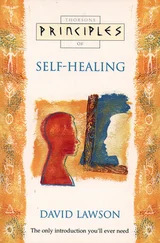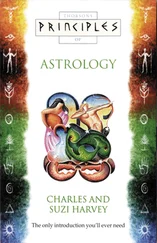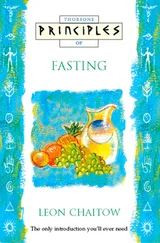Wisconsin (“The Moo State”) is of course best known for being highly cow-intensive, but this state has much more to offer the visitor, as is shown by the following actual quotation from the Wisconsin article in World Book Encyclopedia: “The state is a leader in canning peas.” There is little that we can add to describe the raw excitement of this dynamic state, except to say that (1) the malted milk was invented in Wisconsin in 1887, and (2) a Wisconsin store once sold us a rubber hat shaped like a giant wedge of cheese, and quite frankly, when we were wearing that hat we could have had any woman we wanted (Not that we ever did). Wisconsin’s Official State Interjection is “Huh.”
Wyoming—often called “The Very Last State That We Have to Write About in This Chapter, Thank God”—Contains a great deal of scenery such as the Grand Tetons, which get their name from the Indianexpression, “Get a load of those Tetons.” The major attraction is Yellowstone National Park, where nature-loving visitors may learn about the wilderness by witnessing as federal bears, acting on instinct, rummage through Dodge minivans, tossing tourists aside in their quest for Hostess Twinkles. Yellowstone also features Old Faithful Geyser, an amazing natural phenomenon that, at regularly scheduled intervals, erupts out of the ground and performs “Hello Dolly.” Tips are appreciated.
Other Countries Besides Us In The Western Hemisphere
(Yes! There ARE Some!)
You don’t have to go all the way to Europe to be in a foreign country, because there are several nice ones right here in our own continent. Among the numerous cultural advantages of visiting these countries are the following:
1. They are nearby.
2. They get American TV.
The largest of our North American neighbors are, of course, Canada and Mexico, both of which share lengthy borders with the United States, and both of which have long maintained peaceful relations with us based on mutual trust and respect and a heartfelt understanding of the fact that any time we feel like it we can nuke them into radioactive grit. Let’s take a closer look at these two “friendly neighbors” and see if we can’t learn to appreciate them more without picking up any actual information.
Although we hardly ever think about it except when the TV weather person is showing us a cold air mass, Canada is actually a major country, with an area of more than 169 billion hectometers in longitude, and a bustling population of more than 27 million, if you include members of the wolverine family. There are also a number of humans living up there, and in many ways they have a lifestyle quite similar to ours, including such traditional American activities as driving Japanese cars. The major difference is that Canada is divided into two major linguistic groups—English speakers and French speakers—which have learned, over the course of 300 years of cohabitation, to hate each other. The result is that everything in Canada has to be written in both English and French, which creates a hazardous situation because the two languages frequently disagree.
Despite these differences, Canada has developed into an actual nation with cities, an economy, comical-looking money with beavers on it, etc. To understand how this happened, we need to review:
Canadian history began 20,000 years ago when primitive people came across the land bridge from Asia to watch the quarter-finals of the National Hockey League playoffs, which are still going on. Then nothing happened until 1497, when King Henry VII of England hired an Italian explorer named John Cabot to try to reach Asia by—those explorers were always trying wacky stunts like this—sailing across the Atlantic. Instead, Cabot—he could easily have avoided this by the simple precaution of looking at a map—wound up in Canada. Here is an actual quotation about this event from the World Book Encyclopedia:
Cabot found no such luxuries as jewels or spices. But he saw an enormous amount of cod.
Whoo! I bet THAT thrilled old Henry VII, don’t YOu? Picture the scene: he’s sitting on his throne, all excited because he’s been waiting for months and months, and he can hardly wait to see what kinds of jewels he’s going to get for his investment, and Cabot hands him a bag of dead cod and says: “And there’s plenty more where THAT came from!”
From that day forward Canada was considered to be very desirable, and eventually the British and French got into a big rivalry over it, which resulted in a series of wars called “The Series of Wars Between the British and the French.” This dispute was finally settled in 1763 when the British forces defeated the French in the Battle of Kicking Some French Butt, after which the two sides signed the Treaty of the Two Sides, under which Britain got to keep Canada, and France got to visit for three weeks during the summer.
After that Canada continued to grow and have many important historical events, among which, according to the World Book Encyclopedia, were: Growing Discontent, Lord Durham’s Report, The Return of MacDonald, and Foreign Relations. Also at some point a government formed. The Canadian government consists of a prime minister, whose primary function is to meet with the U.S. president once a year and ask in a whiny voice how come we keep dropping acid rain on them. The president always replies that we’ll stop the acid rain if they’ll stop the cold air masses. Then the two leaders share a hearty laugh and shake hands, because they know that we’re really close international friends. Plus we still have the nukes.
Canada boasts numerous goose-infested lakes and several major cities that rival New York for sophistication, defined as lack of parking. There is also a Vast Arctic Wasteland where visitors are welcome to come and get lost and try to survive by eating their own parka linings. The Vast Arctic Wasteland is one of Canada’s ten provinces, the other ones being Toronto, Greenland, Quahog, Alberta, Pierre, Roberta, North Dakota, Manitoba (Literally, “Many Tubas”), and the Yucatan. All of these provinces feature culture as well as hydroelectric power, and are well worth a visit. But the Canadian tourist attraction that we rank highest of all, despite the fact that we have not technically been there in person, is the Head-Smashed-In Buffalo Jump. We are not making this attraction up. It’s an extremely historical site where, many years ago, Native American tribespersons used to kill buffalo by driving them off the edge of a cliff. According to the legend, one day a tribesperson decided to watch this event from under the cliff, and numerous buffalo landed on his head, which, as you are well aware, is generally fatal, and thus the site got its name: Total Moron Cliff. No, seriously, it really is called the Head-Smashed-In Buffalo Jump, and the Canadian government has set up an interpretive centre there, and when we called it up, a person answered the phone as follows:
“Head Smashed In, may I help you?”
This was probably the highlight of our entire life.
The first thing you have to understand, as a visitor to Mexico, is that you do not, automatically, the instant You arrive, develop a fierce case of the trots. That’s an unfounded myth that epitomizes the condescending attitude that many North Americans have toward Mexico, and we’d like to shatter it right here and now. We have personally visited Mexico, and we found it to be a charming and hospitable place filled with exciting things to do, although unfortunately our activities were somewhat limited by the fact that the instant we arrived we developed a fierce case of the trots. But we definitely enjoyed what we saw, and we made it our business to see every single important historic and cultural site in the entire nation that was within a two-minute sprint of our hotel bathroom. These sites included the hotel bar, the hotel restaurant, the hotel gift shop, and the hotel hallway leading back to our bathroom, all of which revealed the rich cultural tapestry that Mexico Possesses due to all the history that has occurred there in the past.
Читать дальше








